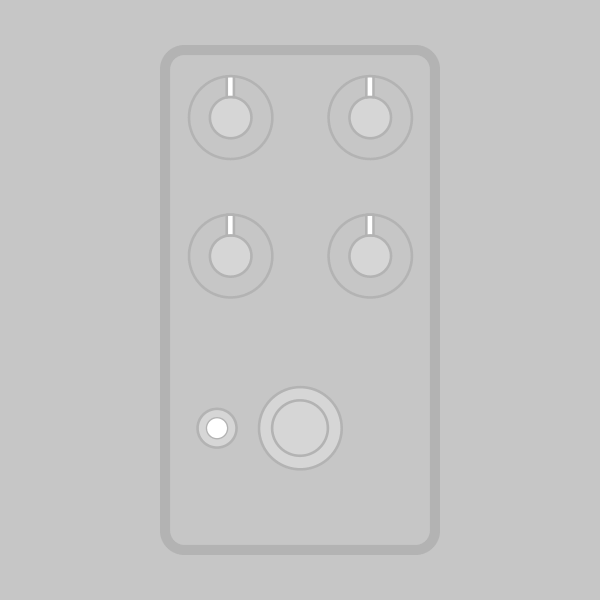
The Straylight Chorus/Vibe is an adaptation of the Univox Uni-Vibe, one of the earliest modulation effects originally released in 1967. It was most famously used by Jimi Hendrix, but it’s been used and adored by countless other professional musicians across its nearly sixty-year history.
The Uni-Vibe circuit is really a four-stage optical phaser as opposed to a true pitch-shifting vibrato, but aspects of the implementation (particularly the uneven capacitors in each stage) cause it to have a Doppler effect similar to a Leslie spinning speaker. The phase-shifted output can either be used on its own or mixed with the dry signal for a chorus effect.
The Uni-Vibe uses a miniature incandescent lamp with four LDRs inside of a reflective box, and this is a key aspect of its sound. There have been many simplified versions of the circuit that use an LED or vactrols in place of the lamp and box, for example the Earthquaker Devices Depths and Danelectro® Chicken Salad, as well as the classic DIY EasyVibe by John Hollis. While they are excellent effects in their own right, they are all approximations of the real thing.
The Straylight project is a direct clone of the original Uni-Vibe circuit, but with some added features and modern conveniences. We have added a charge pump voltage doubler so that it can run off of a standard 9VDC supply instead of wall power like the original. Like most clones, ours does not support a rocker pedal for the speed control, but we have added a second Speed pot on a footswitch so you can transition between two preset speeds with ramp-up/ramp-down effect between the settings.
The original Uni-Vibe handled bypass mode by deactivating the LFO, so the signal still passes through the static phase-shift stages. This imparts a subtle coloration to the tone that many people like. So while standard true bypass is a better option all-around, we’ve included a toggle switch for Cancel mode so that this feature is still available.
The last feature is an internal slide switch to set the input level. The original unit had a significant volume drop at the input, cutting the signal by 1/3, which was responsible for the weak output. Some clones add an input buffer to help with this.
However, the issue is entirely caused by the 22k/47k resistors acting as a voltage divider. A much simpler solution is to just increase the value of the ground resistor to something much higher, such as 2.2M. But again, while this low impedance is a flaw in the circuit design, it’s grown to become part of the sound, so we’ve made both options available.